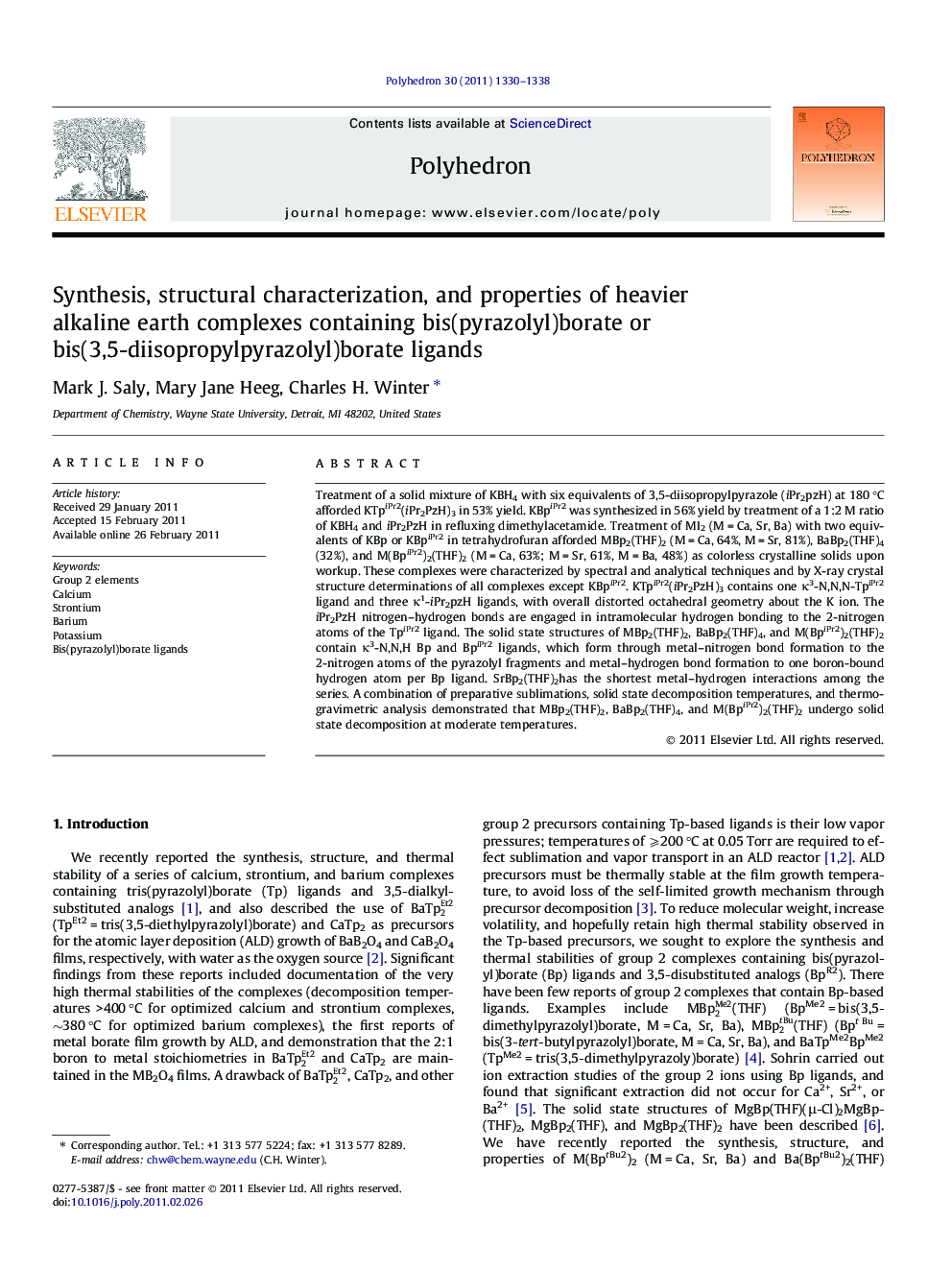| Article ID | Journal | Published Year | Pages | File Type |
|---|---|---|---|---|
| 1336296 | Polyhedron | 2011 | 9 Pages |
Treatment of a solid mixture of KBH4 with six equivalents of 3,5-diisopropylpyrazole (iPr2pzH) at 180 °C afforded KTpiPr2(iPr2PzH)3 in 53% yield. KBpiPr2 was synthesized in 56% yield by treatment of a 1:2 M ratio of KBH4 and iPr2PzH in refluxing dimethylacetamide. Treatment of MI2 (M = Ca, Sr, Ba) with two equivalents of KBp or KBpiPr2 in tetrahydrofuran afforded MBp2(THF)2 (M = Ca, 64%, M = Sr, 81%), BaBp2(THF)4 (32%), and M(BpiPr2)2(THF)2 (M = Ca, 63%; M = Sr, 61%, M = Ba, 48%) as colorless crystalline solids upon workup. These complexes were characterized by spectral and analytical techniques and by X-ray crystal structure determinations of all complexes except KBpiPr2. KTpiPr2(iPr2PzH)3 contains one κ3-N,N,N-TpiPr2 ligand and three κ1-iPr2pzH ligands, with overall distorted octahedral geometry about the K ion. The iPr2PzH nitrogen–hydrogen bonds are engaged in intramolecular hydrogen bonding to the 2-nitrogen atoms of the TpiPr2 ligand. The solid state structures of MBp2(THF)2, BaBp2(THF)4, and M(BpiPr2)2(THF)2 contain κ3-N,N,H Bp and BpiPr2 ligands, which form through metal–nitrogen bond formation to the 2-nitrogen atoms of the pyrazolyl fragments and metal–hydrogen bond formation to one boron-bound hydrogen atom per Bp ligand. SrBp2(THF)2has the shortest metal–hydrogen interactions among the series. A combination of preparative sublimations, solid state decomposition temperatures, and thermogravimetric analysis demonstrated that MBp2(THF)2, BaBp2(THF)4, and M(BpiPr2)2(THF)2 undergo solid state decomposition at moderate temperatures.
Graphical abstractThe novel complexes KTpiPr2(iPr2PzH)3, MBp2(THF)2 (M = Ca, Sr), BaBp2(THF)4, and M(BpiPr2)2(THF)2 (M = Ca, Sr, Ba) have been prepared and structurally characterized, and their thermal stabilities were investigated.Figure optionsDownload full-size imageDownload as PowerPoint slideHighlights► Preparation of MBp2(THF)n (n = 2 or 4) and M(BpiPr2)2(THF)2 (M = Ca, Sr, Ba). ► Unexpected formation of KTpiPr2(iPr2PzH)3. ► Synthesis of KBpiPr2 upon treatment of a 1:2 M ratio of KBH4 with iPr2PzH. ► The solid state structures of the new complexes were determined. ► MBp2(THF)n and M(BpiPr2)2(THF)2 decompose at moderate temperatures.
